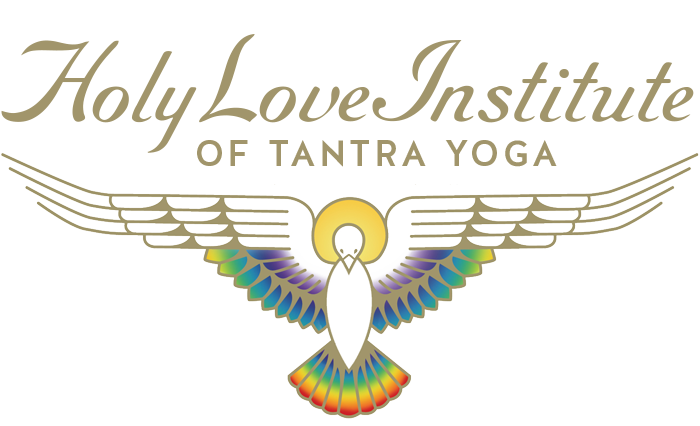Kaula Tantra: The Feminine Side of Shamanism, led by women...
and the later synthesis of the Trika by Abhinavagupta:
"Abhinavagupta was initiated into the Kaula ultimately by the wife of his Kaula Teacher in a sexual union ritual, which brought him to his full kundalini awakening. All the other philosohical schools which he had been inititated into were great - but it was a woman & thru the sexual act which brought him to his full awakening. This Kaula is what we know in the west today as Tantra, because of the sexual act. He later talked about more philosophical types of Trika, yet he got his initial awakening through his Kaula sexual initiation."
Kaula is mantra Marga, meditating on the Sri Yantra: Ka E I La Hrim, Ha Sa Ka Ha La Hrim, Sa Ka La Hrim, Shreem.
Kundalini is sexual energy converted into spiritual energy.
We find in Kashmir, the higher esoteric Tantric traditions were more confined to the lineages established by enlightened Gurus. The secret traditions that issued into the mighty synthesis of Trika Śaivism forged by Abhinavagupta were largely of this sort.
 Kaula Tantra is external Tantra that focuses on concrete practices and rituals. The left-handed Tantrics perform their worships with the use of meat, fish, intoxicants, mudras (certain gestures), and sexual contact. The right-handed Tantrics perform these rituals only symbolically.
Kaula Tantra is external Tantra that focuses on concrete practices and rituals. The left-handed Tantrics perform their worships with the use of meat, fish, intoxicants, mudras (certain gestures), and sexual contact. The right-handed Tantrics perform these rituals only symbolically.
Kaula Tantra focuses its practice on the Muladhara chakra, the first chakra, at the base of the spine. The Kaula Tantra practices are training for having control over the lower desires and physical needs of the body. The energy of the kundalini awakening is considered the divine feminine force, and is to be revered rather than used for mere sensual gratification.
Some right-handed Kaula Tantrics explain that their practice is higher than the left-handed, by virtue of the right-handed practices being only symbolic. Some of the practitioners of left-handed Tantrics explain that their practices are higher than the right-handed by virtue of their secrecy, pointing out that it is harder to find a teacher of these processes.
Much has been written about Kaula Tantra practices (though much more is not written). The Sanskrit scholars have access to many thousands of hand-written manuscripts about the mantras and rituals that go along with these practices.
For the student seeking this path, there appears to be many choices of places to go, people to learn from, books and manuscripts to read, and rituals to perform. It is no wonder that Kaula Tantra is the Tantra that has become so well known in these modern times.
However, the student would do well to be wary when choosing a teacher, as there seems to be a great deal of less than authentic guidance available. Some of the modern behaviors that have been labeled Tantra are only hedonism given a spiritual name, and are taught by people with little knowledge or experience of authentic Kaula Tantra or the higher schools of Tantra. - by Swami Jnaneshvara Bharati
 Kaula Trika (pictured here are Parā, Parā Parā & Aparā) puts a special emphasis on the physical body in spiritual practice "as a vessel of the Supreme".
Kaula Trika (pictured here are Parā, Parā Parā & Aparā) puts a special emphasis on the physical body in spiritual practice "as a vessel of the Supreme".
Parā: I am Shiva, ultimate reality. Non-dual. Parā Parā: I sense that I am Shiva. The self - Jeeva. Dual Non-dual. Aparā: Shiva and I are separate. Matter - the body. Dual.
Kaula encompasses both daily life and mystical practices. Similarly to other tantric schools, it chooses a positive (affirmative) approach: instead of prescribing self-limitations and condemning various actions, it embraces such actions in a spiritual light. Thus, sexuality, love, social life and artistic pursuits are considered vectors of spiritual evolution. The main focus in Kaula is on practical methods for attaining enlightenment, rather than engaging in complex philosophical debate. Whatever is pleasant and positive can be integrated in its practice.
The principal means employed in the Kaula practice are: the spiritual family, the practice of initiation rituals, the couple/the Yamala (sexual rituals such as maithuna), the body (spiritual alchemy inside one's own body), the energy (shakti) (controlled especially through the use of mantras and mystical phonemes) and the consciousness (seen as the epitome of one's whole being and of the universe itself).
The first phase of development is linked to the attainment of a state of non-duality described as an "absorption into the spiritual heart," nirvikalpa samadhi or experiencing the "uncreated light" of consciousness (prakāśa).
The secret nondualist traditions – Krama and Trika – that prevailed in Kashmir sponsored the possibility that, to those who were prepared to receive it, their consciousness could be liberated by a direct transmission of the power of grace (śaktipāta) mediated by the Guru. The importance attributed to yogic practice as exemplified by the Vijñānabhairava further supplemented this tendency.
